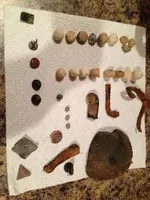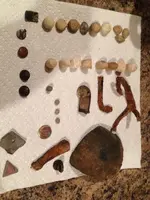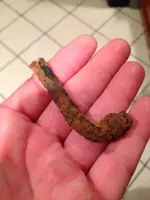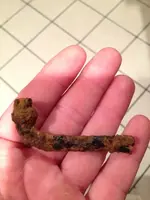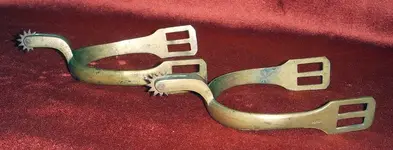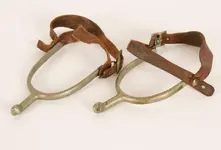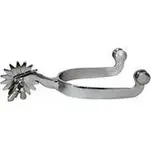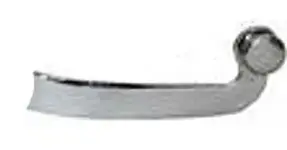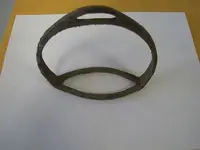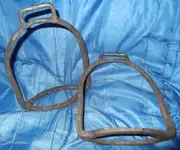Correctly identifying small pieces of iron which are still heavily rust-encrusted can be difficult. Cleaning them by the Electrolysis rust-removal process is helpful. The long thin iron piece in your hand looks at least 3 inches long, so I think it is unlikely to be a spur's tang (which held the spinning rowel). EDIT: I see BosnMate posted some photos of spurs while I was typing this reply... you'll notice that the tang on each of those spurs is much shorter than 3 inches.
The long thick iron object to the left of the cannonball fragment resembles a broken piece of a horsegear snaffle-bit. I said "resembles" because that ID is uncertain until I can examine the piece after it gets cleaned.
I do not recognize the "branched" iron object.
I see you found some cuff-size yankee Enlisted-men's buttons.., and I'm sure you already know what those are. One appears to have some gold gilt on its front, OR it came out of wet ground and thus lacks the usual dark oxidation. Need to see a closeup photo of it to be sure what type it is.
The little disc which appears to be flat and have crossed-cannons on it doesn't seem to be a civil war (or earler) relic. Need to see closeup photos of its front and back.
Also need closeup photos of all the other brass-looking objects.
You asked about the "home-made" lead fishing weights. There's no way to know what flat ones were made from. You'd simply hammer any piece of lead flat, and pierce a little hole for the fishing-line.
About the lead bullets and balls:
The US and CS armies in Virginia were protecting their nations' capitals, so they were supplied with the most-modern equipment. The "western" US and CS armies which fought at your battlesite in Kentucky were supplied with a lot of obsolete roundball-firing smoothbore muskets, which explains the quantity of musketballs you are finding. But, as indicated in my previous reply about your Case-Shot cannonball fragment, some of the .56" and .67" lead balls you are finding are antipersonnel balls from artillery Case-Shot shells... and it can be difficult to tell a lead Case-Shot ball from a fired musketball.
About the tiny lead balls, I should mention for anybody here who doesn't already know, unfortunately there is no way to be sure whether buckshot-balls are from the millions of Civilian game-hunters long after the civil war, or from a civil war battle.



